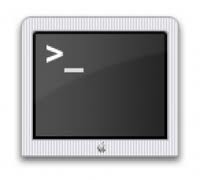Today I want to just give you a pill, but I’m sure that even if is short this article will save a lot of time to someone who, like me, has this requirement. Having a machine with Linux and various IP (which can be IPv4 and / or ipv6) and a Squid Proxy Server configure […]
Article based on the original work of Travis Zajkowski first posted on his blog
As first thing, this is a good definition of subner, from wikipedia:
A subnetwork, or subnet, is a logically visible subdivision of an IP network. The practice of dividing a network into two or more networks is called subnetting.
All computers that belong to a subnet are addressed with a common, identical, most-significant bit-group in their IP address. This results in the logical division of an IP address into two fields, a network or routing prefix and the rest field or host identifier. The rest field is an identifier for a specific host or network interface.
The routing prefix is expressed in CIDR notation. It is written as the first address of a network, followed by a slash character (/), and ending with the bit-length of the prefix. For example, 192.168.1.0/24 is the prefix of the Internet Protocol Version 4 network starting at the given address, having 24 bits allocated for the network prefix, and the remaining 8 bits reserved for host addressing. The IPv6 address specification 2001:db8::/32 is a large address block with 296 addresses, having a 32-bit routing prefix. In IPv4 the routing prefix is also specified in the form of the subnet mask, which is expressed in quad-dotted decimal representation like an address. For example, 255.255.255.0 is the network mask for the 192.168.1.0/24 prefix. Traffic between subnetworks is exchanged or routed with special gateways called routers which constitute the logical or physical boundaries between the subnets.
The benefits of subnetting vary with each deployment scenario. In the address allocation architecture of the Internet using Classless Inter-Domain Routing (CIDR) and in large organizations, it is necessary to allocate address space efficiently. It may also enhance routing efficiency, or have advantages in network management when subnetworks are administratively controlled by different entities in a larger organization. Subnets may be arranged logically in a hierarchical architecture, partitioning an organization’s network address space into a tree-like routing structure.
When you configure a server or a service it’s useful to know what’s the complete IP Address, so there are several different Subnet Calculators available for command line use on Linux. Two popular ones are:
ipcalc
sipcalc

